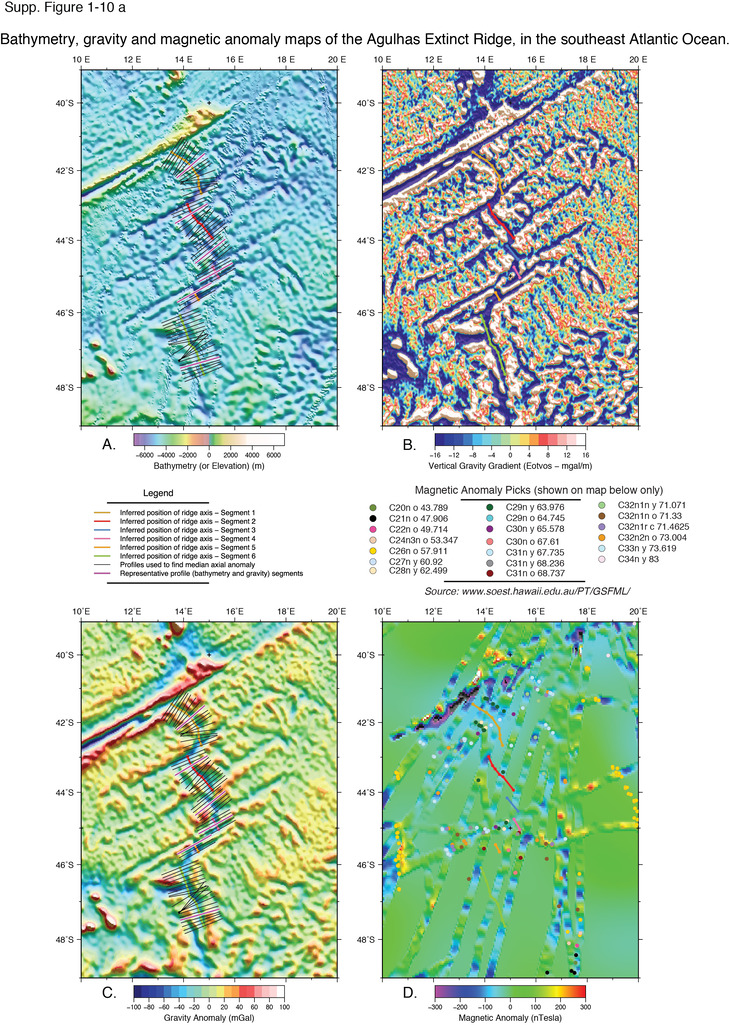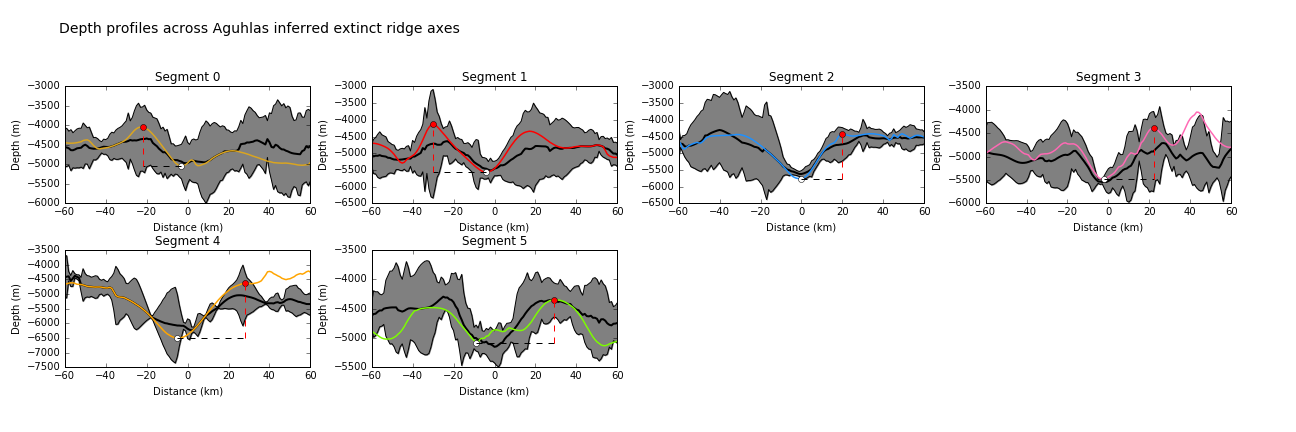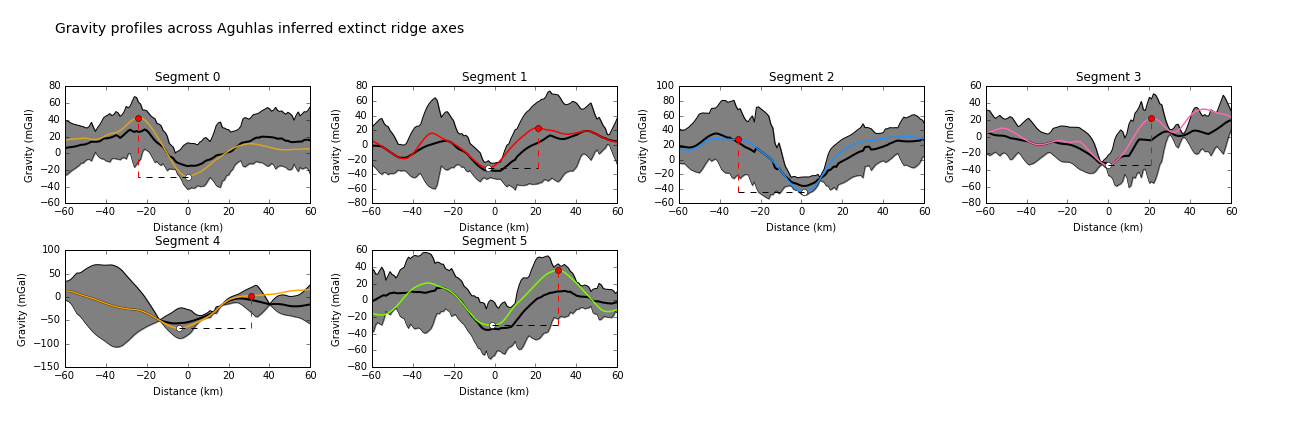| Ocean: | Far South Atlantic |
| Spreading center type: | Large-scale extinct MOR |
| Time of cessation: | 61.6 Ma, Chron C27n (Marks and Stock, 2001) |
| Subsequent active spreading centre: | Current Southern Atlantic segment of Mid-Atlantic Ridge |
| Cessation style: | Likely to have been protracted reduction in spreading rate. |
| Later deformation/volcanism | Recent tectonic activity has been reported on the neighbouring Agulhas Plateau (Ben-Avraham et al., 1995), which presents possibility of regional deformation. |
A well-defined extinct spreading centre is found southwest of the most southerly cape of South Africa, that stretches from a northerly junction with the Agulhas-Falklands fracture zone at ~ 40° S to its most southerly extent at 48° S, 15° E. The extinct spreading centre records an early phase of spreading in the far south of the Atlantic Ocean, with an east-west spreading direction for a period of around 20 Myrs before the ridge jumped west ward to the current Mid-Atlantic Ridge system at anomaly 27 (61.6 Ma) (Barker 1979; LaBrecque and Hayes, 1979). Barker (1979) suggested that this migration may have been one of two or three successive westward jumps of the spreading centre, with the earlier jumps being partially obscured by volcanism near the Agulhas Plateau and Cretaceous Quiet Zone formed crust to the east of the observed extinct spreading centre (Barker 1979).
Magnetic anomalies about the extinct ridge, show that it commenced spreading prior to anomaly 34n (83 Ma) with the half-spreading rate decreasing from 23 mm/yr to a period of asymmetric spreading of 15 mm/yr on the western flank, compared with 13 mm/yr on the eastern flank in the final 3 Myrs of spreading (Barker, 1979). Barker (1979) noted flank asymmetry related to spreading asymmetry and suggests that the mechanism for this asymmetry was a “steady state, ridge-crest thermal source”, in combination with a “controlling factor at intermediate depth” (1979, p. 144).
Early work in the region suggested that a microplate was required to explain the observed pattern of fracture zones (LaBrecque and Hayes, 1979). This was later supported by Marks and Stock (2001), who reviewed solutions for stage-poles in the area and the fit of fracture zones to small-circles, and argued that a three-plate solution was needed. The Malvinas microplate was proposed to fulfill this three plate system (Marks and Stock, 2001).
The region between the extinct ridge and the subsequent South Atlantic spreading centre is associated with the Meteor hotspot trail and it is possible that the influence of this hotspot contributed to the westward migration of the ridge location.
Segments of the Agulhas Ridge are characterised by deep axial valleys, with relief of around 600 - 1500m seen between valley floor and flanking ridges. The axial valleys of segments are between 30 and 50km in width. Gravity anomalies at most of the segments are of around 50 mGals peak to trough magnitude and are strongly negative at the ridge axis, with characteristic symmetry and minor positive anomalies seen on the flanks of the ridge.


